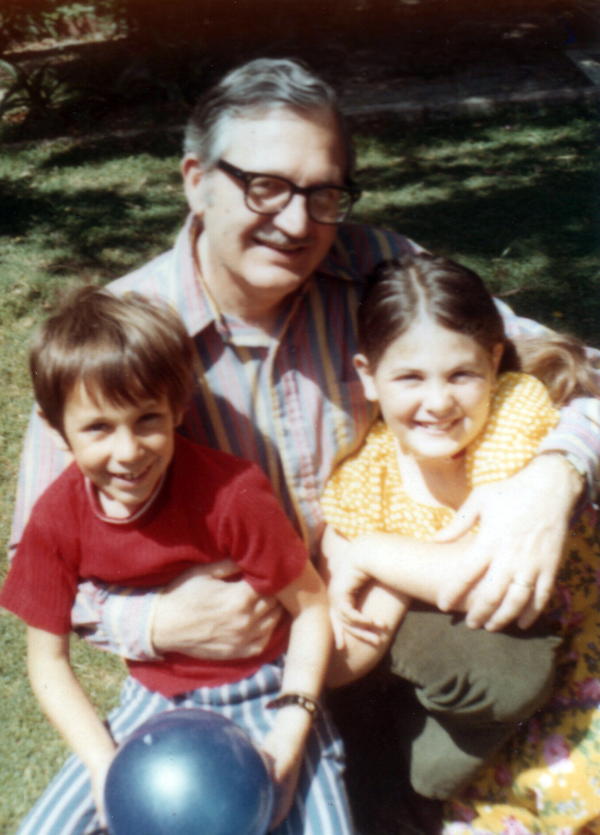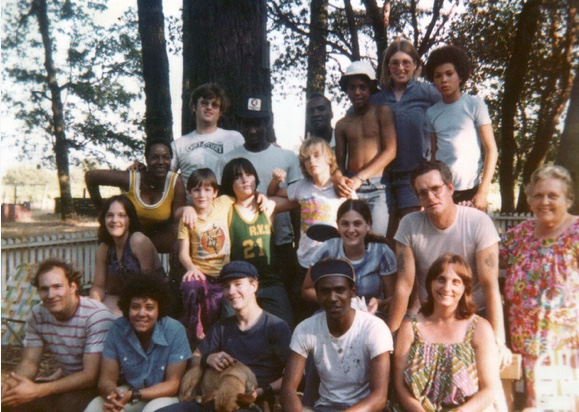
My experiences with Claire and Richard Janaro were born at the Ranch. My memories aren’t just of them, though, but everything else about the place: harvesting the grapes that grew there, raising our Temple children, working with our educational programs, and learning from both the psychologist and clients we had. After November 18, 1978, my experiences continued to multiply, simply from the Janaros’ friendship.
In March 1972, Peoples Temple was considering buying a facility licensed for care of 14 developmentally disabled adults. It included a main house and several smaller residential buildings with an apple orchard, walnut trees, and about 40 acres of grapes. The place was called “Happy Acres,” but no one really liked that name, and it became known simply as “the Ranch.”
That was also about the time that the Janaros came to the Temple from Los Angeles. They came through their friends, Phyllis and Eugene Chaikin, who encouraged them to move to Redwood Valley as they had.
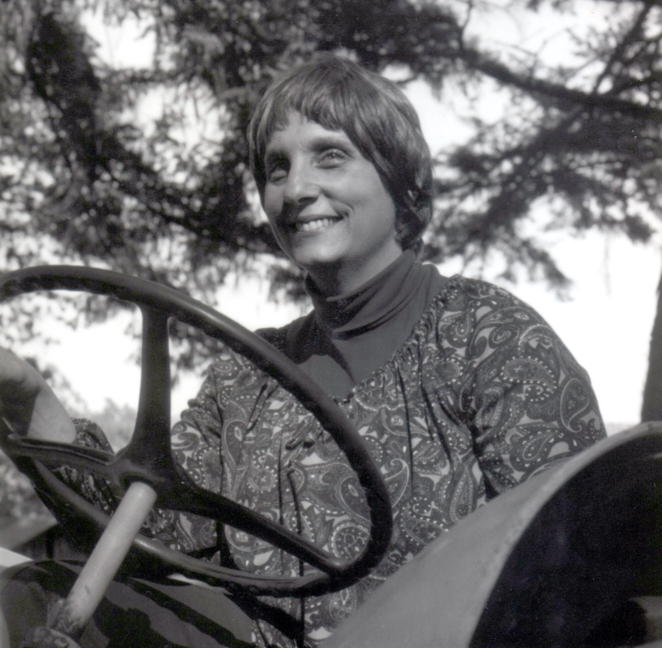
Richard was initially the more eager of the two to make the move. Claire had some reservations and wanted to “try several weeks there” to see how it would be. When the Temple bought the facility, and they were offered the opportunity to run it, they decided to make the move.
Working with the Ranch Clients
The main responsibility for the Janaros were the facility’s clients, half of whom went daily to a Sheltered Workshop setting – where they worked for a minimum wage at various work projects – and the other half going to a sheltered recreation setting with the activities that suited their needs and capabilities.
We ran independent living classes in the evening for some of the clients. These guys would learn about independent living skills: planning meals, buying groceries, preparing meals, cleaning up, money management, cleaning clothes and more. Clients who mastered these skills could apply to live in any of several community sheltered living homes. Clients seemed to really like these activities. Later, under a grant and a psychologist’s guidance, one or two clients a year usually moved from the Ranch into a sheltered living facility.
The guys also knew how to work us and everyone else. By their own admission, they would play a game they called “Retardo” for visiting family and the people “examining” them, in which they would, by choice, revert back to behaving ‘“retarded,” unable to do things like tie shoes, dress, wash, or understand what you were saying to them. Reverting back to what the family knew of them, they knew they’d get favors and special treats. They were certainly smarter than they appeared.
Claire and Richard always worked well with Ranch clients, especially later with help of the psychologist working with us on the Independent Living Skills Grant in late 1976. While all clients required the sheltered living of the Ranch, some had varying needs. Even so, we all learned from each other. In addition to the psychologist who worked with us, one other non-Temple person, Erica, helped us with clients, filling in as well when some of us went to San Francisco or Los Angeles for Temple meetings. This was an unusual example of several outsiders working with us. Not being in the Temple, they were a positive connection with the “outside world” and very supportive of it all.
The psychologist taught us most of the steps of behavior modification. The techniques he taught us were most successful. We learned to understand more clearly why people choose the behaviors they do. Between my Temple experience and the Ranch psychologist, I learned a great deal. Rewarding expected behaviors proved very successful. One reward used was “a quarter” (a 25¢ coin) given to the client, who could buy a drink or soda from the Ranch vending machine or keep it for whatever.
An example of a learning story from the Ranch had to do with clients learning to make their beds. Some seemed to enjoy it while others didn’t care. One laundry day, the sheets started disappearing as soon as they came out of the dryer. We eventually found out what was going on. A client was retrieving the sheets and putting them on his bed – over and over – which we discovered after the twelfth sheet disappeared. He was very good at making his bed!
Richard and Claire had two children, Daren and Mauri, who fit in well with our other children. Mauri liked working with the animals at the Ranch, and most pictures of her include an animal or two. They attended the local Elementary and Junior High there. By this time the number of Temple children in the Ukiah school system was beginning to grow. Some teachers were more supportive of multicultural and interracial stands, and tended to get more of our students with them, often between four and six Temple children per class.
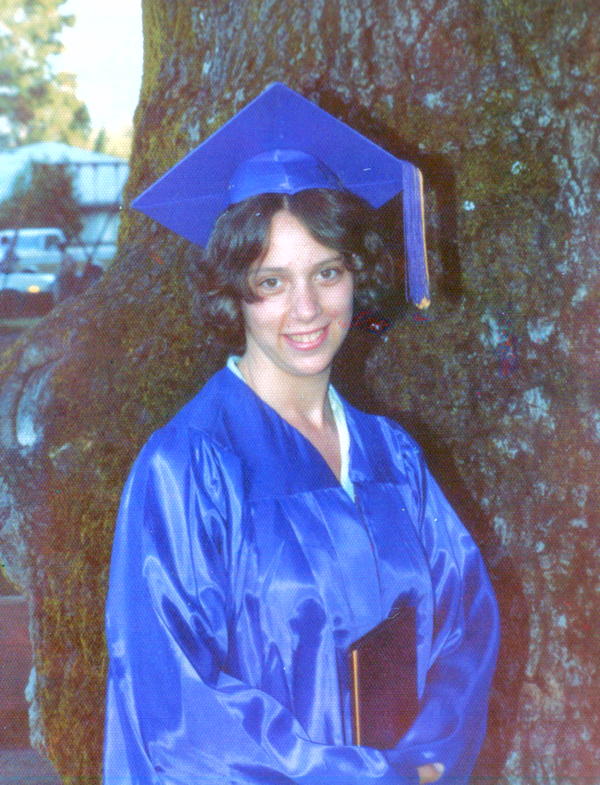 Some of the kids who lived at the Ranch included Marlene Wheeler’s two boys, Darius and Jeff. Kim Livingston graduated from high school while living there, and the photo of her in cap and gown shows the pride and confidence instilled in her by Claire and the Ranch. A young boy named Marvin Sellers came to live with the Janaros, and eventually became known as “Marvin Janaro.”
Some of the kids who lived at the Ranch included Marlene Wheeler’s two boys, Darius and Jeff. Kim Livingston graduated from high school while living there, and the photo of her in cap and gown shows the pride and confidence instilled in her by Claire and the Ranch. A young boy named Marvin Sellers came to live with the Janaros, and eventually became known as “Marvin Janaro.”
Living at the Ranch, we all learned to always keep the premises clean and in order, as we were always under scrutiny. One requirement was to keep the kitchen spotless, which required abundant reminders at first. Many of us prepared snacks or ate late dinners. After much scolding, we learned to clean up after ourselves, to put things back in cupboards and drawers, and to wipe down the counters. To this day, I still clean up after myself as I go! Thank you Claire!
The Ranch staff included 10 to 15 positions, mostly comprised of Temple members. Claire happily became an “earth mother” to all these folks, clients and resident Temple members alike, while Richard worked more in the organizational and day-to-day operational aspect of the place. Besides running the business end, he often served as chauffeur for taking clients places. They especially loved Thursday nights, when they went out for dinner in Ukiah, either at the local pizzeria – which offered their favorite of wafer-thin-sliced pepperoni – or to the local “all-you-can-eat” smorgasbord. Richard always had a smile on his face driving the bus or station wagon. You could see he enjoyed taking the “guys” out!
The Ranch took in many abandoned animals and usually had a minimum of 15 dogs and cats running around. One dog came to us with an extremely bad case of mange. It took more than a year to treat. The local vet did it for free and published an article about the experience. He gave a much reduced price on all calls, knowing the good works of the Ranch and Temple. Claire’s favorite dog was Kaluga, a black-and-white mixed breed that was always with her, tail wagging, jumping around or seated nearby.
Claire was a great cook, a skill she had before she arrived, but honed even more finely there. Open to innovation, she could whip up the most delicious huge pots and pans of food in a jiffy. After all, she was cooking for more than 30 of us, including Temple members and Ranch clients. Sometimes my duties included helping with breakfast. I told her about Mexican chocolate with lots of cinnamon and beaten to a froth with a “molinillo.” So (big smile) she whipped up some awesome Mexican hot chocolate. The clients always asked for it!
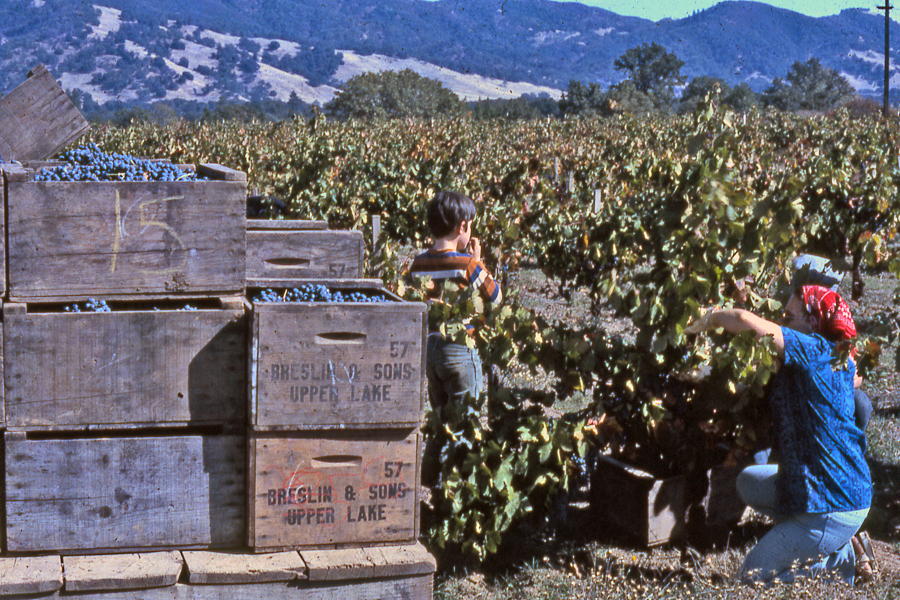
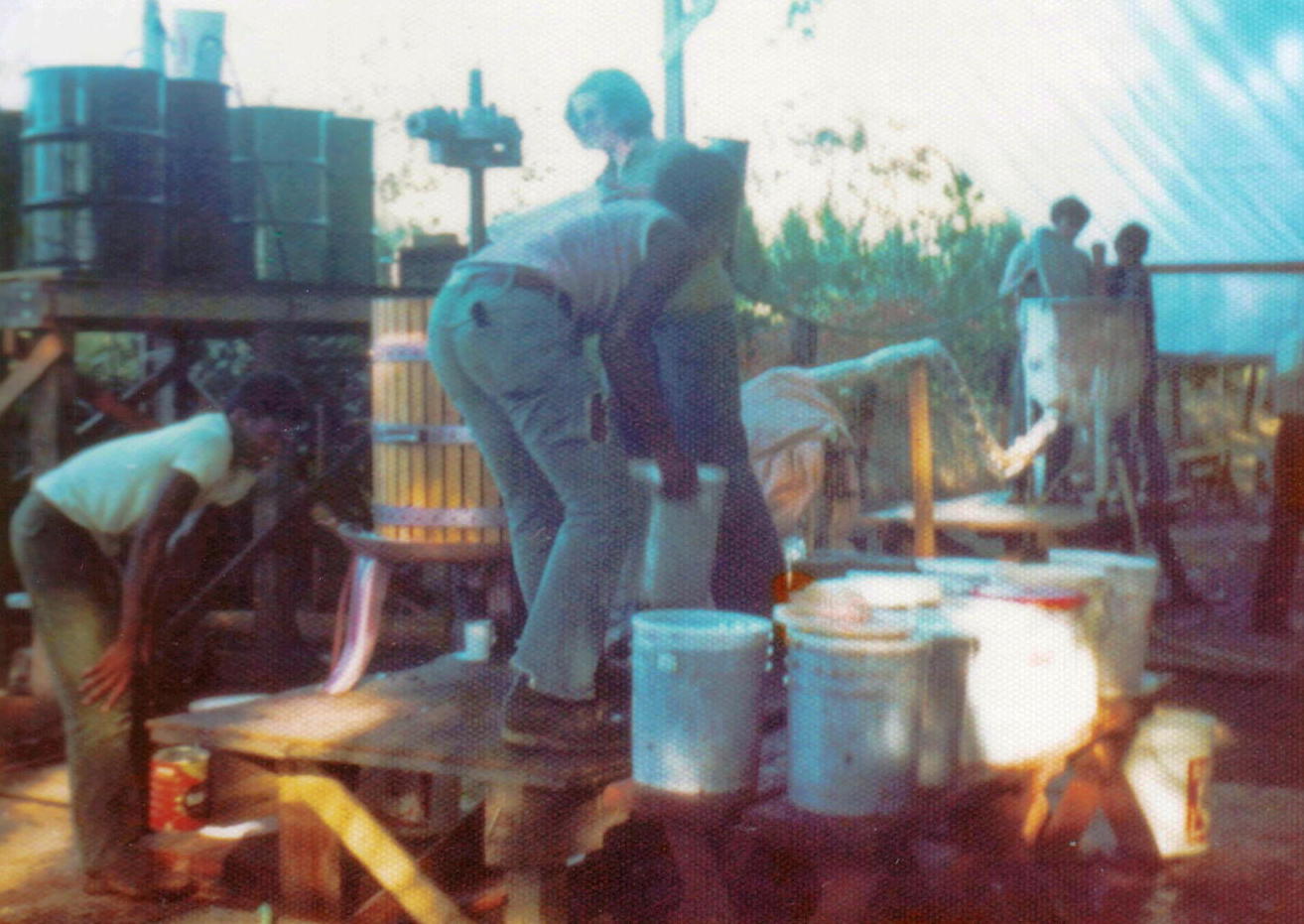
One summer the Temple decided to use the Ranch grapes to make grape juice. It was not a difficult process, but it took people, planning, organization, equipment and grapes to handle the pressing of the grapes, sterilizing the juice and the two-quart bottles, filling the bottles, and sealing them. We sold most of them, but some were used in services and given to the communes. A pale pink color, the juice was very good, and even better when left open for a week or so, when it became slightly alcoholic.
Temple members working at the Ranch alternated between going to weekend meetings in San Francisco and Los Angeles, and staying back to run the facility. Claire went with us sometimes and worked with child care during services. She was always good with kids. She loved to dance to music in meetings – dancing in her own marvelous way, to her own rhythms. Though it was usually not to the musical rhythm, it was somehow in tune with everyone dancing. Watching her enjoyment made you feel and share in her celebration! A real delight!!
The Temple Goes to Jonestown
Even though Temple folks had important jobs at the Ranch, the focus for the Temple increasingly became on Jonestown. We were all expecting to go there eventually, and one by one, people did. The Ranch had HBO, and the Temple bought several commercial-grade tape recorders for us to record movies and school-videos to send to Guyana. Claire and several others shopped sales and packed items – clothes, household goods, etc. – to send in the crates being shipped down there. We even worked through our connection with the ultra-rightwing John Birch Society to buy many freeze-dried goods. It was reported that the freeze-dried cottage cheese was especially delicious!
Mauri, Daren and Richard went to Jonestown in 1977, as did Marvin. Daren, who went in April, was assigned to Cottage 12 with 15 people. His roommates included Curtis Winters (who had worked at the Ranch as well), David George and Clifford Gieg. Mauri went in August and lived in Dormitory 5, which had 50 people assigned to it. The area under the building was tall enough to house the animal shelter, where Mauri worked.
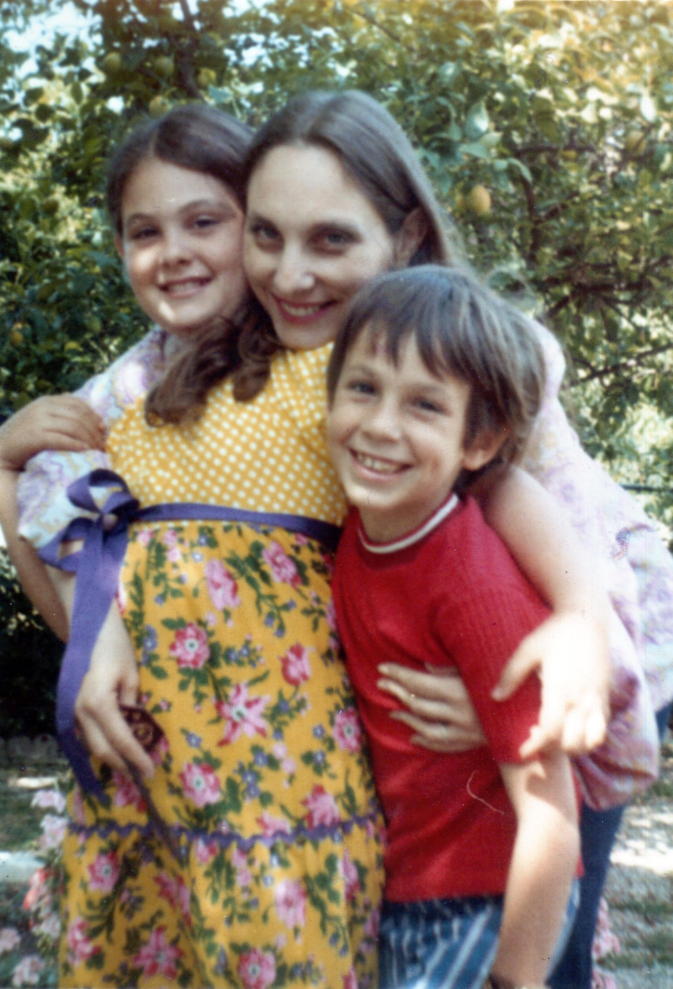
Richard went down in September. He worked in Georgetown and was involved with buying the Albatross to be used for transporting goods between Georgetown and Trinidad. Like others in Georgetown, he survived because he and three others were on the Albatross in Trinidad when Leo Ryan arrived in Jonestown. Claire was on her way down to Guyana at that moment – she learned about Ryan’s assassination as she rode in a taxi from the Georgetown airport to Temple headquarters that night – and never made it to Jonestown. Mauri, Daren, and Marvin all died on November 18, 1978. Both Richard and Claire returned to the States afterwards and lived in Los Angeles until their deaths.
Coming Home
One of the first things to happen in Redwood Valley following the deaths 6000 miles away was the removal of the clients from the Ranch. Claire was in Guyana, and my wife Bonnie was in charge. No one knew what was going on. The press arrived at the Ranch en masse, looking to “get a story.” Temple members met them at the entrance road and requested that they not take any pictures: the Ranch was still the private home of the clients, we said, and they should be respected. The reporters’ response was that “they’re retarded and wouldn’t know it anyway.” They got no interviews or photos.
The Temple’s corporation was dissolved, and the Ranch never re-opened. The FBI collected Temple assets to pay for their investigation, the disposition of bodies, and all other costs incurred by the Government. Those of us living at the Ranch were fortunate and allowed to remain rent-free until it was sold in late spring 1979.
At the time of the deaths, though, no one – neither the survivors nor the FBI – really had any idea what was happening. Things got even darker about ten days later, when George Moscone and Harvey Milk were assassinated in San Francisco. Neither the mayor nor the councilman nor the assassin had any connection to the Temple. Still, people were expecting the worst from all that was happening. Survivors were returned to the US, and billed for the flight. Upon arrival they were interrogated, treated like criminals and finally released. Survivors then began finding their way back into US life and culture, a difficult task for all of us.
Reentering US Culture
As Claire and Richard re-settled in Los Angles, they became a central place to contact and let all of us “survivors” – as we became known, even to ourselves – know all the information they learned. People, even those who knew us, did not know how to help us. The City of San Francisco offered counseling support through Dr. Chris Hatcher of SF State. Some survivors took advantage of his availability, but most found it hard to talk about.
The connection to others through Claire and Richard was greatly helpful, though never planned. It just emerged. Claire’s genuine interest in people, the caring and concern of both Claire and Richard, provided the nurturing connection we all felt and needed as survivors.
I stayed a year more in Ukiah, before deciding to leave to pursue studies in Special Education. After that I moved to a teaching job in San Diego. On my way through Los Angeles, I stopped overnight with Claire and Richard. Richard asked if I had furniture; when I admitted I didn’t, he gave me enough for a living room, dining room and more. I was very happy to get the things, and still have two lamps, two end tables and a coffee table from them!
Except for the Janaros and my ex-wife Bonnie, I was not much connected to any other survivors for more than 20 years. In 2005, I heard – through Claire, of course – about Leigh Fondakowski’s play The People’s Temple. With Claire’s usual nudging, I went to see it. As I was seated, I heard a loud “Don Beck!” from Grace Stoen Jones across the theater. I absolutely melted in her warmth and caring: she made me feel I was coming home! I was blown away! It was then I connected with other survivors, through Claire and Richard and another couple, Mac and Rebecca, and their website.
Then I found we had more in common. When the “death list” was released, reporters said we could see it if they could photograph us as we read it; we refused. Reporters said they would take it to the Concerned Relatives. Then Grace told me they had refused the same offer! Wow! Twenty years to correct a deep misunderstanding! And find nothing really divided us anymore.
Claire was always active in organizing the gatherings we survivors had – sometimes after memorial meetings at Evergreen Cemetery, and sometimes over summer, at times not associated with any anniversary. It was then that we could gather and talk without having to explain anything and just appreciate the goodness we all brought with us.
* * * * *
I will always remember Claire’s smile and good will for all of us. I will also remember Richard, who never really spoke a lot, but who always had many helpful, supportive insights, and who would give you the shirt off his back. Claire and Richard were wonderful, loving folk who exemplified the care we wanted to build in Peoples Temple. How lucky we are to have known and remember them!
(Don Beck was a member of Peoples Temple for ten years. He directed the Peoples Temple children’s choir during its Redwood Valley years and made several trips to Guyana during its pioneer days. Beginning about 20 years after the tragedy, shortly after this site went online, he became one of its most dedicated researchers, transcribing Edith Roller journals, reviewing and analyzing Jonestown records released through the Freedom of Information Act, and compiling them for the first section of documents on the Jonestown Research page. He also contributed numerous articles and remembrances. Most of those writings may be found here.)
(Don died on July 9, 2021, following a lengthy illness. He was 78.)
